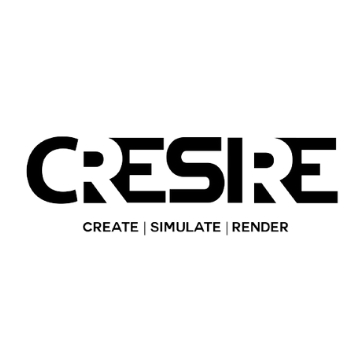Understanding the 5D Cost Estimation Methodology: Unlocking Efficient Project Management
Harnessing the Power of 5D Modeling and BIM for Accurate Cost Estimation and Streamlined Project Delivery

Introduction
Construction projects are complex endeavors that require meticulous planning, efficient resource management, and accurate cost estimation. In recent years, advancements in technology have revolutionized the construction industry, making way for innovative methodologies like 5D cost estimation. Understanding the 5D cost estimation methodology, along with its integral components such as 5D modeling and 5D BIM modeling, is crucial for project managers and stakeholders alike.
The Evolution of Cost Estimation
Construction cost estimation has come a long way from traditional manual methods. Historically, estimators would rely on their expertise and experience to determine project costs. However, this approach often resulted in inaccuracies, delays, and cost overruns. With the advent of computer-aided design (CAD) and building information modeling (BIM), the construction industry has witnessed a paradigm shift towards more efficient cost estimation techniques.
Benefits of 5D BIM in Construction Projects
The integration of 5D BIM modeling in construction projects offers a range of benefits, positively impacting project management and cost estimation.
1 - Accurate and Real-Time Cost Estimation
One of the primary advantages of the 5D Cost Estimation methodology is its ability to provide accurate and real-time cost estimates. By linking the project's 3D model with cost data, project managers can visualize and evaluate cost implications during the design phase itself. This empowers stakeholders to make informed decisions and avoid costly changes during later stages of construction.
2 - Enhanced Collaboration and Coordination
Effective collaboration and coordination between project teams are vital for the success of any construction project. 5D BIM modeling facilitates seamless communication among architects, engineers, contractors, and clients. By centralizing project information in a digital platform, stakeholders can collaborate, share updates, and identify potential clashes or conflicts in real-time. This streamlines the decision-making process and minimizes costly errors.
3 - Improved Time and Resource Management
Time and resource management are critical factors in construction projects. The 5D cost estimation methodology aids in optimizing these aspects by providing project managers with valuable insights. By visualizing the project's timeline, allocating resources efficiently, and simulating different scenarios, project managers can identify bottlenecks and implement proactive measures to streamline project delivery.
4 - Enhanced Risk Mitigation
Construction projects are susceptible to various risks, including unforeseen design changes, material shortages, or market fluctuations. 5D BIM modeling allows project managers to assess and mitigate risks effectively. By simulating different scenarios and analyzing cost implications, stakeholders can develop robust risk management strategies, reducing the likelihood of cost overruns and delays.
5D Modeling: The Foundation of Efficient Cost Estimation
At the core of the 5D cost estimation methodology lies 5D modeling, an integral part of the BIM process. 5D modeling combines the geometric and visual representation of the project (3D modeling) with cost data (4D scheduling) to create a comprehensive project management tool.
Integration of Geometry and Cost
5D modeling integrates the geometric information from the 3D model with cost data, resulting in a synchronized representation of the project. This integration enables project managers to visualize the project's components, such as walls, floors, and equipment, while simultaneously understanding the associated costs.
Seamless Cost Estimation
With 5D modeling, cost estimation becomes a seamless process. As the project evolves and design changes occur, the 5D model automatically updates the cost data, providing real-time insights into the financial implications of design modifications. This dynamic approach to cost estimation ensures accuracy and minimizes the risk of cost discrepancies between the design and construction stages.
Quantity Takeoff Automation
Traditionally, quantity takeoff was a time-consuming and error-prone task. However, with 5D modeling, this process becomes automated and efficient. By associating cost data with specific elements in the 3D model, the software can extract quantities automatically, reducing human error and accelerating the estimation process.
Cost Visualization and Analysis
The visual nature of 5D modeling allows project managers to analyze costs comprehensively. By overlaying cost data onto the 3D model, stakeholders can visually identify cost-intensive areas, prioritize resources, and make informed decisions to optimize project outcomes. This visual analysis enhances transparency and facilitates effective cost control throughout the project lifecycle.
Read, The Growing Trend of BIM 5D Cost Estimation in AEC IndustryImplementing the 5D Cost Estimation Methodology
To implement the 5D cost estimation methodology effectively, project teams need to follow a systematic approach. Here are key steps involved in the process:
Step 1: Develop a Detailed 3D Model
The first step is to create a detailed 3D model of the project using BIM software. This model should include accurate geometry, components, and assemblies. The 3D model serves as the foundation for subsequent cost estimation activities.
Step 2: Associate Cost Data with Model Elements
Next, project teams need to associate cost data with each element in the 3D model. This involves assigning cost attributes to walls, floors, doors, windows, equipment, and other project components. The cost data can include material costs, labor costs, equipment costs, and other relevant expenses.
Step 3: Establish Cost Libraries and Databases
To streamline the cost estimation process, it is essential to establish cost libraries and databases. These repositories house standardized cost data for different materials, labor rates, and equipment. Cost libraries ensure consistency and accuracy in cost estimation across multiple projects.
Step 4: Conduct Quantity Takeoff and Cost Calculation
Using the 5D modeling software, project teams can automatically extract quantities from the 3D model and calculate costs based on the associated cost data. This process eliminates the need for manual quantity takeoff and reduces the chances of errors.
Step 5: Evaluate and Refine Cost Estimates
Once the initial cost estimates are generated, project teams need to evaluate and refine them. This involves reviewing the cost breakdown, analyzing the cost distribution across different project elements, and comparing the estimates against industry benchmarks. Iterative refinement ensures accurate cost predictions.
Step 6: Collaborate and Share Cost Information
Throughout the cost estimation process, collaboration and information sharing are crucial. 5D BIM software allows project teams to collaborate seamlessly, share cost information, and incorporate feedback from stakeholders. This collaborative approach fosters transparency, enhances accuracy, and aligns everyone involved in the project.
Conclusion
In conclusion, understanding the 5D cost estimation methodology is vital for efficient project management in the construction industry. By integrating 5D modeling and 5D BIM modeling, project teams can achieve accurate and real-time cost estimation, enhance collaboration and coordination, improve time and resource management, and mitigate risks effectively.
The benefits of 5D BIM extend beyond cost estimation, contributing to overall project success. Embracing 5D cost estimation and leveraging advanced technologies can lead to improved project outcomes, reduced costs, and enhanced stakeholder satisfaction.
Source: https://www.cresireconsulting.com/services/5d-bim-construction-cost-estimation-services/












